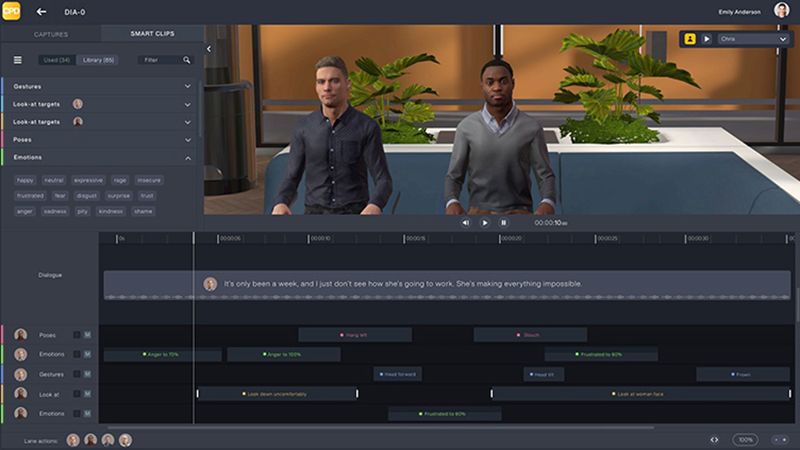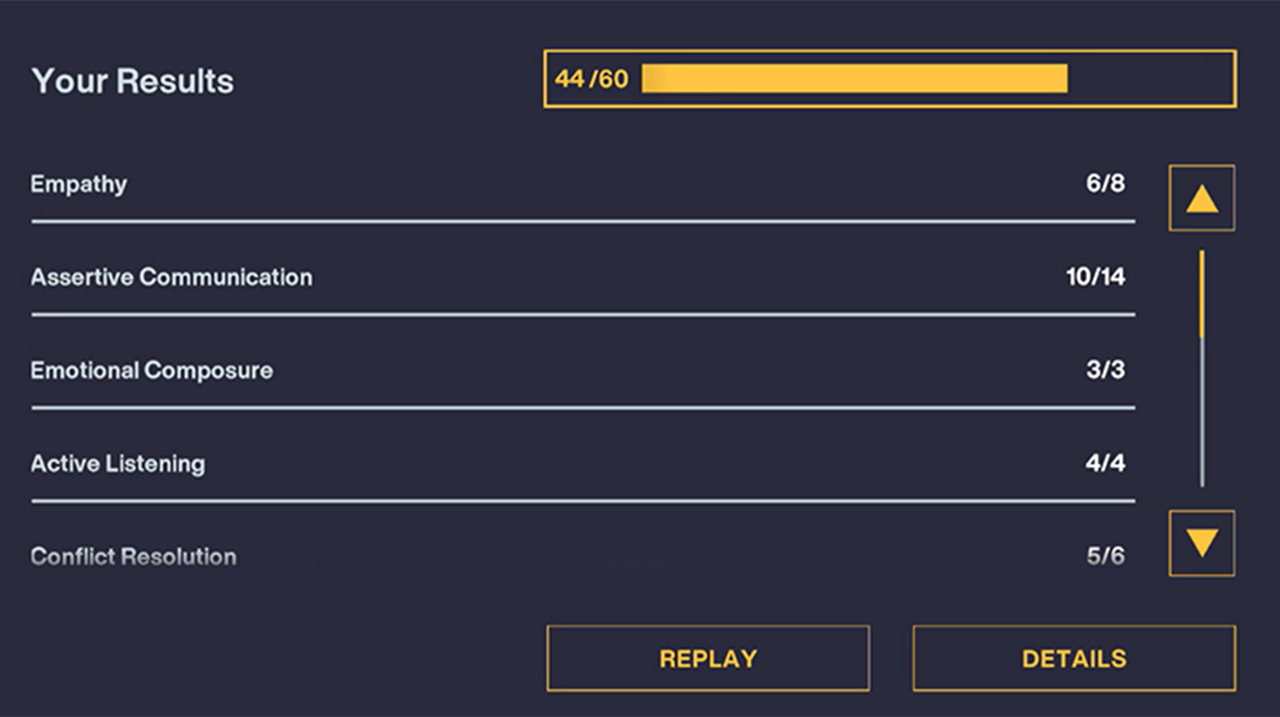Virtual Reality Soft Skills Training: The New Way to Build Soft Skills
Virtual Reality trains workers on specific tasks and safety procedures across various industries. Simulations recreate real-world environments to give workers experience minus the risk. The individual can also participate in the learning exercise remotely without losing out on the experience.
The same technology can be used to develop a person’s soft skills. Virtual Reality soft skill training allows participants to interact with simulated human beings in a realistic environment to learn how to listen and communicate effectively. The technology also gives the manager access to a dashboard display that tracks the employee’s progress and the program’s effect on the user.
The use of virtual reality as a training tool is changing how organizations train and develop their workers’ soft skills, which have become a requirement for success in today’s work environment.

What Are Soft Skills?
Soft skills are featured heavily in the workplace, both consciously and unconsciously. They refer to a person’s ability to work and interact with those around them. No one works in a silo in an organization. Everyone’s words and actions affect the rest of the team members.
Soft skills are used in communication both in-person and online. They are not only the words the person uses to respond, but how they carry themselves both at work and on camera when meeting virtually. These skills can refer to everything from prioritization and time management to leadership and problem solving. They also refer to how people conduct themselves at work and how they approach their work.
These attributes have long been challenging to identify and measure in the workplace. They are not as quantifiable as hard skills, such as a person’s ability to play a sport or use a computer program, with measurable results. Workers express themselves and utilize these skills differently, but they are just as crucial to their overall success in the organization as their ability to complete an assignment.
Workers need to use their soft skills to get the support and information they need while also recognizing what others need from them. This exchange is the only way for everyone to work together toward a common set of goals.
How to Build Soft Skills
Companies can use a range of learning tools and programs to develop their worker’s soft skills, but time and cost continue to present challenges in the workplace. The organization will need to provide different content and courses on soft skills, including learning exercises that require active participation and instruction-based materials. The project will need a designated leader or instructor that can answer employee questions and track everyone’s individual progress. The program should target specific skills with quantifiable metrics for analyzing success.


Virtual Reality can help organizations develop custom soft skill learning programs that reduce the cost of training. There are several benefits to using this technology instead of a traditional e-learning or classroom environment. VR provides an immersive soft skills training experience for the user that mimics the characteristics of real life. They can interact one-on-one with a simulated human being while navigating various problems and topics. The manager can then review the person’s score and the overall success of the content on a separate display.
Users can add customized learning experiences to the platform without coding. The organization can continuously refine its simulations to improve the learning experience and make it more relevant to its operations.
Virtual Reality soft skills training enhances user engagement by putting them in a simulated environment. Compared to other learning models, they are more likely to retain the information they have learned and utilize it in the real world.
According to a recent study on the effectiveness of this technology:
-
-
VR learners were four times faster than classroom learners
-
1.5 times faster than e-learners that used traditional online learning materials
-
VR-trained employees were also 275% more confident to act on what they learned after training, a 40% improvement over classroom learners and a 35% improvement compared to e-learners
-
This type of learning makes a stronger impression because the training experience feels authentic to the user at the moment. VR learners were also 3.75 times more emotionally connected to content than classroom learners and 2.3 times more emotionally connected to content than e-learners.
VR learning can even help reduce the cost of soft skills training if the organization has enough participants. The more workers in the program, the more the company will save. At 375 learners, VR training can cost less than classroom learning. At 1,950 learners, VR training can cost less than e-learning.
The technology is scalable, making it easy to add new users worldwide. Participants can log onto the learning platform using a VR headset to access content from their home or office and access the same experience as their colleagues without losing out on important experiences.
Soft skills are essential for success in any industry. VR technology is here to make it easier for workers to learn these skills regardless of location or background.
About Elara
Based in Northern California, Elara is a strategic creative agency that develops digital content for medical and industrial markets across the globe. For 20 years, Elara has partnered with clients to develop creative solutions to showcase their vision and transform digital content mediums – including virtual reality, mixed and augmented reality, 3D, and video. They specialize in creating deeply interactive experiences for teaching, training, marketing, and sales. For more information, all parties should contact us at information@elarasystems.com.
